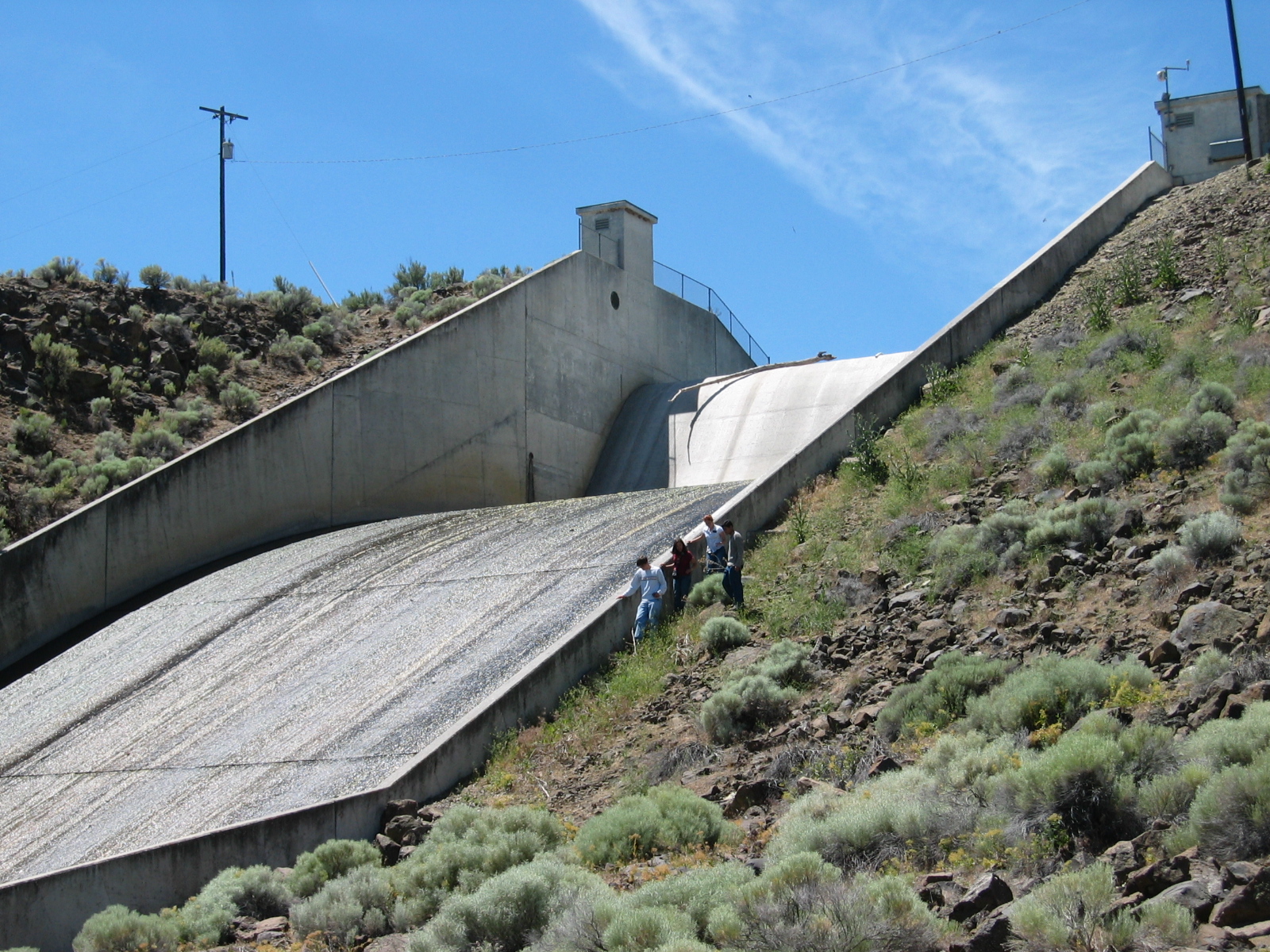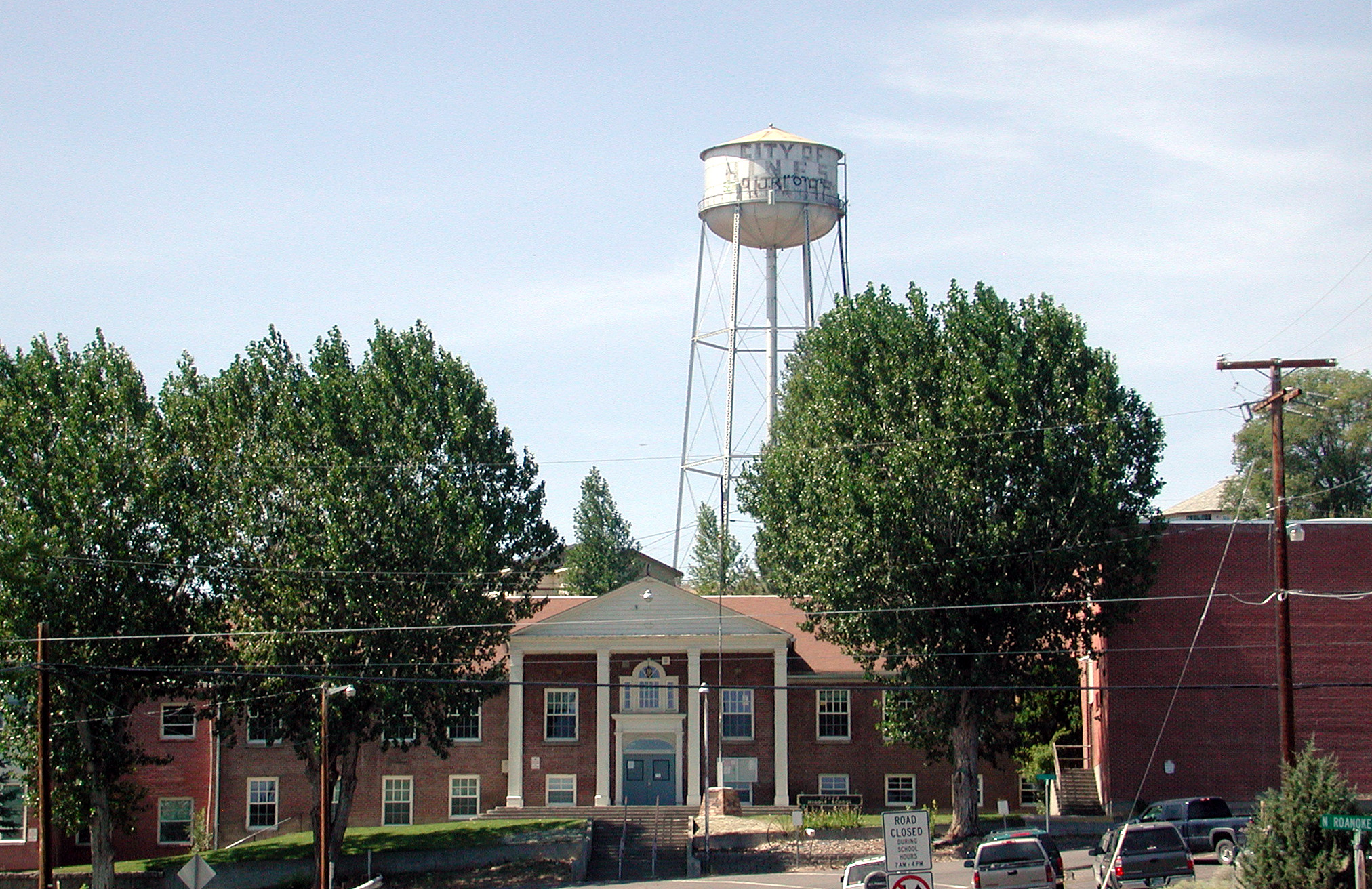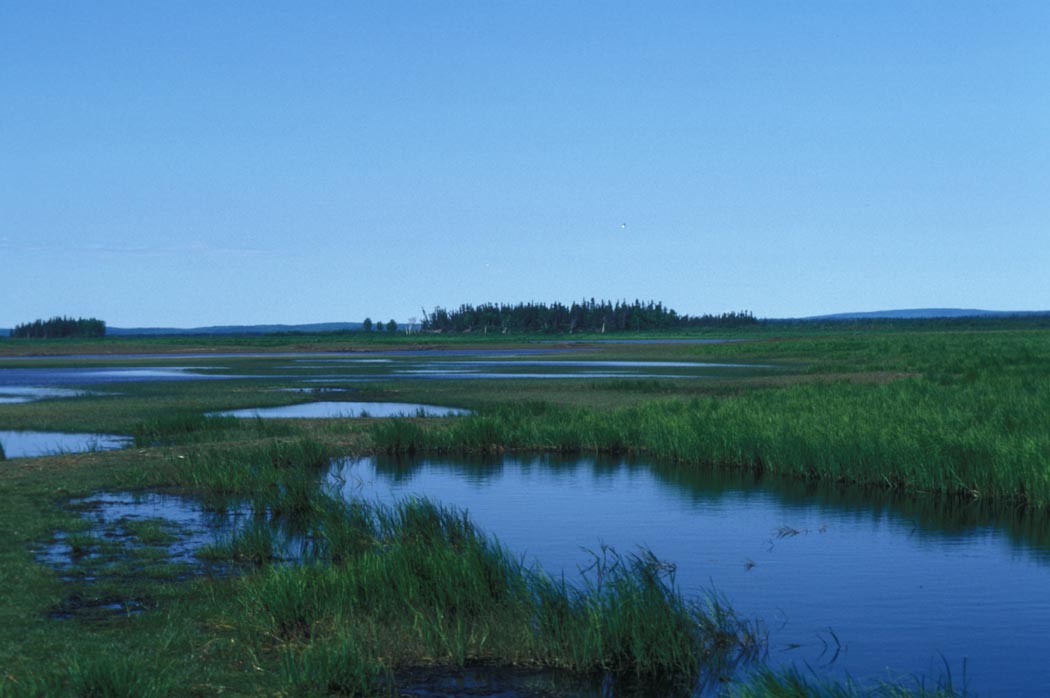|
Malheur National Forest
The Malheur National Forest is a United States National Forest, National Forest in the U.S. state of Oregon. It contains more than in the Blue Mountains (Pacific Northwest), Blue Mountains of eastern Oregon. The forest consists of Great Basin Desert, high desert grasslands, Sagebrush, sage, juniper, pine, fir, and other tree species. Elevations vary from about to the peak of Strawberry Mountain (Oregon), Strawberry Mountain. The Strawberry Mountains of eastern Oregon extend east to west through the center of the forest. U.S. Route 395 (Oregon), U.S. Route 395 runs south to north through the forest, while U.S. Route 26 (Oregon), U.S. Route 26 runs east to west. Overview The forest was established by President of the United States, President Theodore Roosevelt on June 13, 1908, and is named after the Malheur River, from the French language, French, meaning "misfortune". It is managed by the United States Forest Service for forestry, timber extraction, cattle grazing, g ... [...More Info...] [...Related Items...] OR: [Wikipedia] [Google] [Baidu] |
Strawberry Lake (Oregon)
Strawberry Lake is a natural high-elevation body of water in the Strawberry Mountain Wilderness in the U.S. state of Oregon. Located in the Malheur National Forest about south of Prairie City, Oregon, Prairie City in Grant County, Oregon, Grant County, the shallow lake covers about surrounded by forest. Recreational activities in the lake basin include hiking, Backpacking (wilderness), backpacking, skiing, and fishing. Geology and geography Stratovolcanoes erupting about 14.7 million years ago in the Miocene covered about of what later became Grant County with andesite lavas and mudflows. The Strawberry Mountains are eroded remnants of the mountains created by those volcanoes and by intrusion (geology), intrusions of igneous rock. Strawberry Lake is the largest of the small glacial lakes found in the Strawberry Mountain Wilderness. The surface of the lake is more than above sea level. Occupying part of a valley carved by ice in the Pleistocene, the lake formed behind a ... [...More Info...] [...Related Items...] OR: [Wikipedia] [Google] [Baidu] |
Malheur River
The Malheur River ( ) is a tributary of the Snake River in eastern Oregon in the United States. It drains a high desert area, between the Harney Basin, the Blue Mountains and the Snake. In the past Malheur Lake (located in the enclosed Harney Basin to the southwest) outflowed into the river. Course The Malheur River rises in the southern Blue Mountains of southern Grant County, south of Strawberry Mountain in the Strawberry Mountain Wilderness. It flows south through Malheur National Forest, then southeast past Drewsey and through Warm Springs Reservoir. At Riverside in western Malheur County, it receives the South Fork Malheur River from the south, then turns sharply back northward to Juntura, where it receives the North Fork Malheur River from the north. From Juntura it flows generally east past Vale, joining the Snake from the west approximately north of Ontario, Oregon. The mouth of the Malheur River is approximately at Snake river mile (RM) 370 or river ... [...More Info...] [...Related Items...] OR: [Wikipedia] [Google] [Baidu] |
Hines, Oregon
Hines is a city in Harney County, Oregon, United States. The population was 1,563 at the 2010 census. History A community named Herrick was formed just southwest of Burns when railroad promoter and sawmill operator Fred Herrick founded a lumber company there. Edward Hines bought the railroad and lumber company from Herrick in 1928, and a post office named Hines was established in 1931 to serve the Edward Hines Lumber Company mill and surrounding community. The mill has since changed hands at least two more times. The mill closed in 2006. Geography According to the United States Census Bureau, the city has a total area of , of which, is land and is water. Demographics 2010 census As of the census of 2010, there were 1,563 people, 678 households, and 423 families living in the city. The population density was . There were 738 housing units at an average density of . The racial makeup of the city was 94.9% White, 0.3% African American, 1.0% Native American, 0.4% Asian, 1.2% ... [...More Info...] [...Related Items...] OR: [Wikipedia] [Google] [Baidu] |
Prairie City, Oregon
Prairie City is a city in Grant County, Oregon, Grant County, Oregon, United States. The population was 909 at the 2010 United States Census, 2010 census. The community was incorporated by the Oregon Legislative Assembly on February 23, 1891. History Prairie City grew out of the former mining camp of Dixie, Grant County, Oregon, Dixie, established in 1862 about up Dixie Creek from the John Day River. Prairie City, at the River mouth, mouth of the creek, was chosen after placer mining rendered Dixie unsuitable for a townsite. The new city's post office was established in 1870 with Jules Le Bret as postmaster. A narrow gauge line, the Sumpter Valley Railway (SVR), ran from Baker City, Oregon, Baker City west to Sumpter, Oregon, Sumpter and on to its western terminus at Prairie City, which it reached in 1907. It carried passengers as well as freight shipped by ranchers, mining interests, and timber companies until its piecemeal abandonment in the 1930s. In the 21st century, a herit ... [...More Info...] [...Related Items...] OR: [Wikipedia] [Google] [Baidu] |
John Day, Oregon
John Day is a city located approximately north of Canyon City, Oregon, Canyon City in Grant County, Oregon, United States, at the intersection of U.S. Routes U.S. Route 26 in Oregon, 26 and U.S. Route 395 (Oregon), 395. The city was named for the nearby John Day River, which, along with Dayville, Oregon, Dayville, had been named for a Virginia member of the 1811 Astor Expedition, John Day (trapper), John Day. The city was incorporated in 1901. As of the 2020 United States census, 2020 census, the city had a total population of 1,664, making it the largest city in the county. History The first homestead staked in what is now Grant County, Oregon, Grant County (then part of Wasco County, Oregon, Wasco County), in 1862 by B. C. Trowbridge, was within the limits of the present city of John Day. The Eastern Oregon community was not as quick to grow as neighboring Canyon City, Oregon, Canyon City, which was the county seat and center of the bustling mining industry in the area. Inc ... [...More Info...] [...Related Items...] OR: [Wikipedia] [Google] [Baidu] |
Malheur County, Oregon
Malheur County (, ) is one of the List of counties in Oregon, 36 counties in the U.S. state of Oregon. As of the 2020 United States census, 2020 census, the population was 31,571. Its county seat is Vale, Oregon, Vale, and its largest city is Ontario, Oregon, Ontario. The county was named after the Malheur River, which runs through the county. The word "malheur" is French for misfortune or tragedy. Malheur County is included in the Ontario, Oregon micropolitan area, Ontario, Oregon Micropolitan Statistical Area, which is also included in the Boise metropolitan area, Boise Combined Statistical Area. It is included in the eight-county definition of Eastern Oregon. History Malheur County was created , from the southern territory of Baker County, Oregon, Baker County. It was first settled by miners and stockmen in the early 1860s. The discovery of gold in 1863 attracted further development, including settlements and ranches. Basques in Oregon, Basques settled in the region in th ... [...More Info...] [...Related Items...] OR: [Wikipedia] [Google] [Baidu] |
Baker County, Oregon
Baker County is one of the 36 counties in the U.S. state of Oregon. As of the 2020 census, the population was 16,668. The county seat and largest city is Baker City. The county was organized on September 22, 1862, when a portion of Wasco County was partitioned off. The new county's area was reduced in 1864 when Union County was partitioned off, and again in 1887 when Malheur County was partitioned off. The county's lines were last adjusted in 1901 when a parcel was added to the county. Baker County was named for Edward Dickinson Baker, a senator from Oregon who was killed at Ball's Bluff, a battle of the Civil War in Virginia in 1861. The county is part of the county definition of Eastern Oregon. History The first groups from the eastern U.S. following the Oregon Trail passed through the area on their way to the Willamette Valley, unaware of the potential wealth they passed over. At Flagstaff Hill, near Baker City, of wagon ruts left by immigrants can still be seen. ... [...More Info...] [...Related Items...] OR: [Wikipedia] [Google] [Baidu] |
Harney County, Oregon
Harney County is one of the List of counties in Oregon, 36 counties in the U.S. state of Oregon. As of the 2020 United States census, 2020 census, the population was 7,495, making it the sixth-least populous county in Oregon. The county seat is Burns, Oregon, Burns. Established in 1889, the county is named in honor of William S. Harney, a military officer of the period, who was involved in the Pig War (1859), Pig War and popular in the Pacific Northwest. Harney County is a rural county in southeastern Oregon.Crombie, Noelle (January 3, 2016)"Where is Burns? Harney County home to more cattle than people" ''The Oregonian''. Portland. Retrieved December 17, 2024."Harney County Transportation System Plan: Revised Final Draft" . ''Harney County Planning Department''. (June 2001). p ... [...More Info...] [...Related Items...] OR: [Wikipedia] [Google] [Baidu] |
Grant County, Oregon
Grant County is one of the List of counties in Oregon, 36 counties in the U.S. state of Oregon. As of the 2020 United States census, 2020 census, the population was 7,233, making it Oregon's fourth-least populous county. The county seat is Canyon City, Oregon, Canyon City. It Oregon Geographic Names, is named for President Ulysses S. Grant, who served as an army officer in the Oregon Territory, and at the time of the county's creation was a Union (American Civil War), Union general in the American Civil War. Grant County is included in the eight-county definition of Eastern Oregon. History Grant County was established on October 14, 1864, from parts of old Wasco County, Oregon, Wasco and old Umatilla County, Oregon, Umatilla counties. Prior to its creation, cases brought to court were tried in The Dalles, Oregon, The Dalles, county seat of the vast Wasco County. The great distance to The Dalles made law enforcement a difficult problem, and imposed a heavy burden on citizens wh ... [...More Info...] [...Related Items...] OR: [Wikipedia] [Google] [Baidu] |
Old Growth
An old-growth forest or primary forest is a forest that has developed over a long period of time without disturbance. Due to this, old-growth forests exhibit unique ecological features. The Food and Agriculture Organization of the United Nations defines primary forests as naturally regenerated forests of native tree species where there are no clearly visible indications of human activity and the ecological processes are not significantly disturbed. One-third (34 percent) of the world's forests are primary forests. Old-growth features include diverse tree-related structures that provide diverse wildlife habitats that increases the biodiversity of the forested ecosystem. Virgin or first-growth forests are old-growth forests that have never been logged. The concept of diverse tree structure includes multi-layered canopies and canopy gaps, greatly varying tree heights and diameters, and diverse tree species and classes and sizes of woody debris., the world has of primary forest r ... [...More Info...] [...Related Items...] OR: [Wikipedia] [Google] [Baidu] |
Wilderness
Wilderness or wildlands (usually in the plurale tantum, plural) are Earth, Earth's natural environments that have not been significantly modified by human impact on the environment, human activity, or any urbanization, nonurbanized land not under extensive agriculture, agricultural cultivation. The term has traditionally referred to terrestrial environments, though human impact on marine life, growing attention is being placed on marine ecosystem, marine wilderness. Recent maps of wilderness suggest it covers roughly one-quarter of Earth's terrestrial surface, but is being rapidly degraded by human activity. Even less wilderness remains in the ocean, with only 13.2% free from intense human activity. Some governments establish protection for wilderness areas by law to not only protected area, preserve what already exists, but also to promote and advance a natural expression and development. These can be set up in preserves, conservation preserves, national forests, national par ... [...More Info...] [...Related Items...] OR: [Wikipedia] [Google] [Baidu] |
Gold Mining
Gold mining is the extraction of gold by mining. Historically, mining gold from Alluvium, alluvial deposits used manual separation processes, such as gold panning. The expansion of gold mining to ores that are not on the surface has led to more complex extraction processes such as pit mining and gold cyanidation. In the 20th and 21st centuries, most volume of mining was done by large corporations. However, the value of gold has led to millions of small, Artisanal mining, artisanal miners in many parts of the Global South. Like all mining, Mining#Human rights, human rights and Environmental effects of mining, environmental issues are common in the gold mining industry, and can result in environmental conflict. In mines with less regulation, health and safety risks are much higher. History The exact date that humans first began to mine gold is unknown, but some of the oldest known gold artifacts were found in the Varna Necropolis in Bulgaria. The graves of the necropolis were ... [...More Info...] [...Related Items...] OR: [Wikipedia] [Google] [Baidu] |





